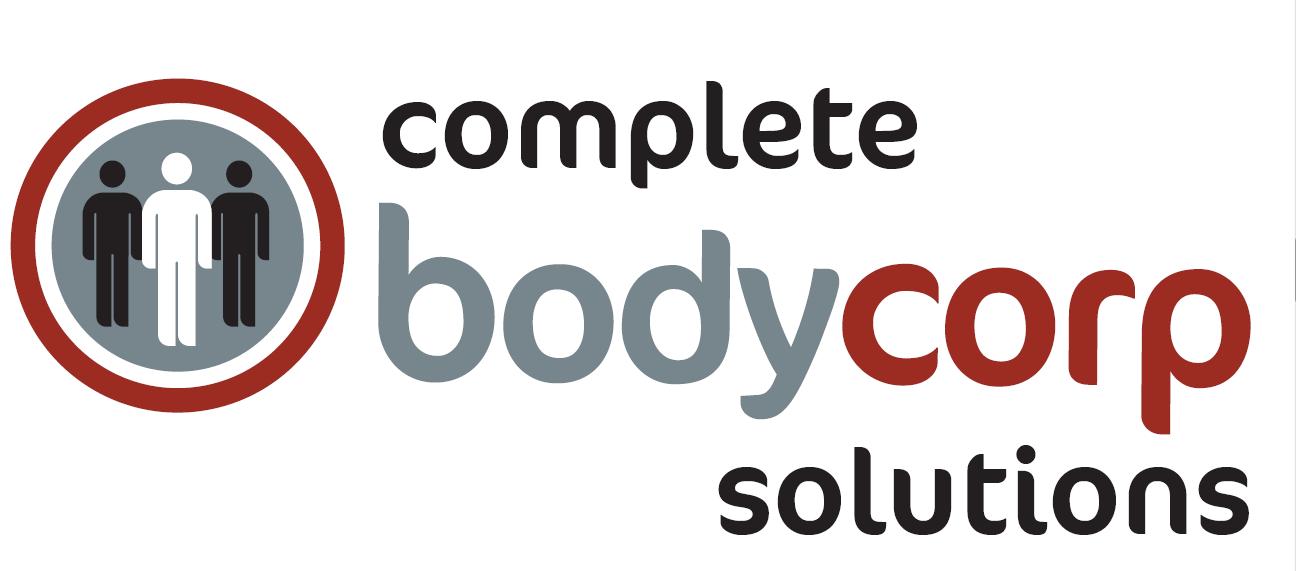The BC Noticeboard - Quarterly Newsletter - December 2024
January 16, 2025

View our December 2024 BC Noticeboard -Quarterly Newsletter
- Merry Christmas & CBCS Out-Of-Office-Dates
- Important Notices & Reminders
- Staff Update: Ashleigh Marr
- New Resource: Body Corporate Committee Meeting Handbook
- Reducing Common Property Utility Bills - Embracing Energy Efficiency
- Summer Maintenance Checklist
- Stay Connected: Get weekly updates on our Facebook page!

View our April 2025 BC Noticeboard - Quarterly Newsletter - Welcome & Easter Office Closure Dates - Important Notices & Reminders - Staff Update: Liz Ruscoe - Healthy Homes Compliance Deadline Approaching: 1 July 2025 - The Financial Cost of Ignoring Maintenance - Autumn Maintenance Checklist - Stay Connected: Get weekly updates on our Facebook page! https://public2.bomamarketing.com/email/QEMj

Virtual vs. In-Person Meetings: What’s Best for Your Body Corporate? At CBCS, we understand that choosing between a virtual or in-person meeting depends on the specific needs and preferences of the body corporate. Each format offers distinct advantages, and selecting the right one can enhance participation and decision-making. Virtual meetings are ideal for routine discussions, offering flexibility, cost savings, and increased accessibility for owners who may not be able to attend in person. They work well when topics are straightforward and decisions are clear-cut. In-person meetings are often preferable for more complex or sensitive matters, where face-to-face discussions foster stronger engagement, clearer communication, and more effective decision-making. Finding the right balance is key. Factors such as the size of the body corporate, the nature of the agenda, and owner preferences all play a role. At CBCS, we’re here to help ensure your meetings are as productive and effective as possible—no matter which format you choose!

At CBCS, we pride ourselves on delivering exceptional body corporate management with a personal touch. From seamless communication to expert financial oversight, we work hard behind the scenes so your building runs smoothly and your community thrives. What sets us apart? Transparent communication Tailored solutions for every property Fast, proactive solutions Trusted by countless communities Passionate about protecting your investment Whether it’s a boutique complex or a large multi-unit development, our experienced team is ready to help you thrive. Let us take the stress and complexity out of body corporate management! Contact us today on 04 970 5435 and let’s take your property to the next level!

It's almost Autumn! Is your unit property ready for the colder season ahead? Here are the key areas you should be focused on: Complete Necessary Maintenance Tasks: Take the time to inspect your property for wear and tear or damage. Completing maintenance tasks now will help your property perform at its best throughout the colder months and prevent costly repairs later. Healthy Homes Standards Compliance: With the final compliance deadline for Healthy Homes Standards approaching on 1 July 2025, it's essential to ensure your property meets the required standards for heating, insulation, ventilation, moisture control, and draught stopping. These standards are designed to improve living conditions and tenant well-being. We recommend addressing these requirements sooner rather than later to avoid last-minute complications and stress. For detailed information on the Healthy Homes Standards and landlord obligations, visit: https://www.tenancy.govt.nz/healthy-homes/ . Check in with Your Tenants: After ensuring your property meets the Healthy Homes standards, take the opportunity to check in with your tenants. Regular communication—such as during property inspections—helps address any needs or concerns promptly, keeping tenants satisfied. It’s also a great chance to gather feedback on the property’s condition. Taking these proactive steps will ensure a smooth transition into the colder months and a well-maintained property for the year ahead.

As the days grow shorter and temperatures begin to drop, it’s essential to start preparing your property for the upcoming months ahead. Taking these steps early will help you avoid potential issues down the line and protect your investment to the highest standard. Here are just a few tasks to add to your maintenance list: -Service your heating system -Change your heat pump filters -Sweep chimneys -Test smoke alarms -Book a roof inspection -Trim trees away from gutters -Clear your gutters -Pest-proof your home (especially against rats and mice) By staying ahead of these tasks, you’ll ensure your property is ready for whatever the season brings.

When it comes to property maintenance, the proverb "a stitch in time saves nine" rings particularly true. According to data from property management firms, buildings that neglect routine maintenance often face repair costs that can be four to five times higher than if they had maintained a regular schedule. Dealing with issues as they arise removes the luxury of time to shop around for competitive costings and contractors can inflate costs for work that is deemed urgent. The financial cost of deferred maintenance goes beyond the obvious repair bills. For example: • Increased insurance premiums – Insurance companies in New Zealand may raise premiums or even deny coverage for buildings with a history of poor maintenance. • Loss of property value – Potential buyers and investors are quick to notice signs of neglect, and a poorly maintained property can reduce the overall value of the building and surrounding units. • Higher energy bills – HVAC, plumbing, and electrical systems that are not well-maintained are less efficient, leading to inflated energy costs. • Health and safety liabilities – Unattended issues such as mould growth, water damage, or deteriorating structures can lead to serious health risks and legal liabilities if tenants are harmed as a result of the neglect. Preventive maintenance is not just an expense—it’s a strategic investment that protects the value of New Zealand properties. For body corporate managers and unit owners, the cost of neglecting maintenance tasks is far too high. By embracing a proactive approach to building care, you can safeguard your property’s long-term value, reduce risk, and create a safer, more comfortable environment for all.

In a world of rising costs, prevention is undoubtedly more budget-friendly than a reactive approach. That is why prioritising preventative maintenance is a savvy financial move. Your owners corporation or body corporate should have a capital works or sinking fund and a maintenance plan detailing the costs and upkeep of future capital expenses such as painting the building, driveway refurbishment or replacing common property items. Regularly reviewing and updating this plan allows your committee to effectively schedule maintenance and repair work. Continuous monitoring could also help better anticipate funding requirements, potentially even predicting the need for a special levy to top up your capital works fund, sinking fund or maintenance fund. To gain better financial transparency on budgets, make it a point to review this plan every 12 months, possibly during a property walkthrough, to check the past year’s completed tasks and gauge if additional maintenance and repair work is required. By allocating resources to address potential issues before they become costly problems, your owners corporation or body corporate could save money in the long run and shield your budget from unexpected financial shocks. This proactive approach may help to protect your property’s safety, structural integrity, and long-term sustainability, potentially reducing the need for expensive emergency repairs.

When managing your body corporate or owners corporation fees, collaborative input can be a game-changer. Facilitating open dialogues with property owners and residents about budget affairs can instil a sense of collective responsibility, paving the way for enhanced financial transparency and bolstering community engagement. Engage actively with your committee to have a say in crucial decisions related to budgeting and spending. Informed and engaged community members are more likely to support and contribute to cost-saving initiatives such as organising bulk rubbish removal days, negotiating insurance premiums, or sharing resources for minor repairs and maintenance tasks.

There are numerous opportunities for energy-efficient upgrades within your community. In today’s eco-conscious world, energy efficiency is more than just a trend – it’s a necessity that reduces environmental impact and helps yield long-term savings on bills. Here are some key areas where you can embrace energy efficiency on common property or individual lots: Lighting: one of the simplest yet most effective changes you can implement is switching out traditional lighting for energy-saving LED alternatives. Not only do these lights consume less energy, but they also enjoy a longer lifespan, which means fewer replacements and lower maintenance costs. Heating and cooling systems: these systems are often major energy guzzlers. By upgrading to energy-efficient systems, you can maintain a comfortable environment within your strata community while keeping utility costs in check. Solar power: solar panel installations are a game-changer, especially in regions with ample sunlight. They can significantly reduce your community’s reliance on traditional power sources, yielding electricity bill savings and contributing to a greener planet. Appliances: energy-efficient appliances are crucial in creating a sustainable living environment. Old appliances can be an energy drain. Replacing them with energy-efficient alternatives can reduce your community’s energy consumption and utility costs. By taking proactive steps toward energy efficiency, your BC community can not only reduce its environmental footprint but also enjoy significant cost savings, creating a brighter and more sustainable future for everyone involved.



